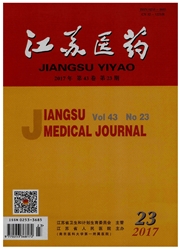

 中文摘要:
中文摘要:
目的建立中低温低流量的SD大鼠模型,分析其表型和神经损伤机制。方法 60只SD大鼠随机均分为手术组和假手术组。大鼠肛温降至(25.0±0.5)℃时,手术组夹闭双侧颈总动脉2h后重新放开,假手术组不夹闭颈总动脉。采用脑部血流仪测定缺血-再灌注期间大鼠脑血流量及内环境相关参数的变化,HE染色和TUNEL法观察大鼠神经细胞在缺血-再灌注后不同时间点的变化,Western blot检测凋亡蛋白的表达。结果手术组夹闭颈总动脉后,脑血流率下降至15%左右,血气、血压等指标随体温变化而变化。与假手术组相比,手术组相关神经组织出现损伤,TUNEL阳性细胞与凋亡相关蛋白的表达增加(P〈0.01或P〈0.05)。结论 SD大鼠中低温低流量的神经系统改变类似于主动脉夹层术中的神经系统缺血-再灌注的变化过程,神经损伤程度与神经细胞的凋亡水平密切相关。
 英文摘要:
英文摘要:
Objective To establish an animal model with moderate hypothermic low flow(MHLF)in SD rats and preliminarily analyze the phenotype and the mechanism of nerve injury.Methods Sixty SD rats were equally and randomly divided into 2groups.The rats in group A accepted the occlusion of bilateral common carotid arteries for 2 hours,which was followed by reperfusion when the rectal temperature was reduced to(25.0±0.5)℃.The rats in group B accepted sham operation as the controls.The changes of regional cerebral blood flow(rCBF)and the relevant parameters of internal environment were examined by laser Doppler flowmetry during ischemiareperfusion.The change of nerve cells at different times after ischemia-reperfusion was observed by HE and TUNEL staining.The expression of apoptosis protein was detected by Western blot.Results rCBF in group A was reduced to about 15% after the occlusion of common carotid arteries.Blood gas and pressure changed along with the decrease of body temperature.Compared with group B,the related nervous tissues were injured and TUNEL-positive cells and apoptosis protein expression were increased in group A(P〈0.01 or P〈0.05).Conclusion The change of nervous system in SD rats during MHLF is similar to that during ischemia-reperfusion process in aortic dissection surgery.The degree of nerve injury is closely related to apoptotic level of nerve cells.
 同期刊论文项目
同期刊论文项目
 同项目期刊论文
同项目期刊论文
 期刊信息
期刊信息
